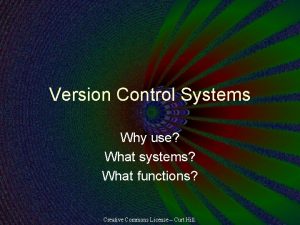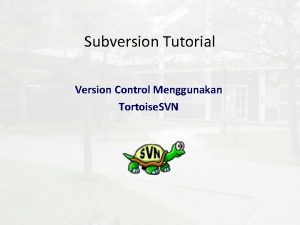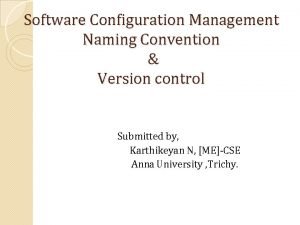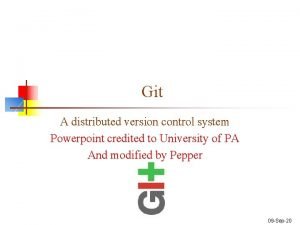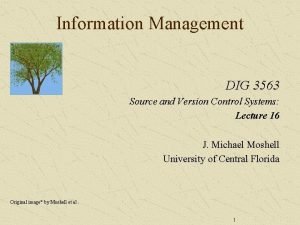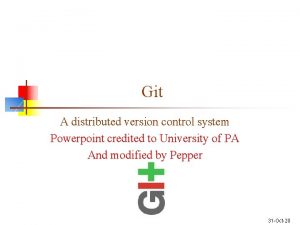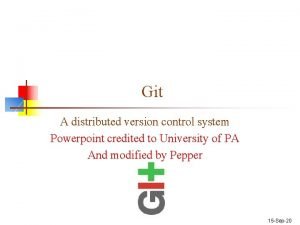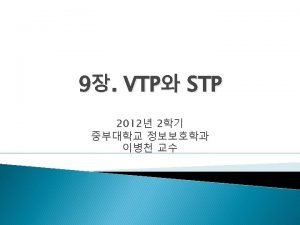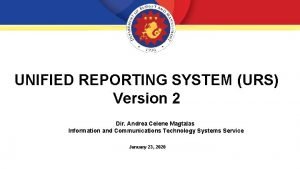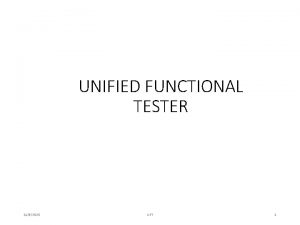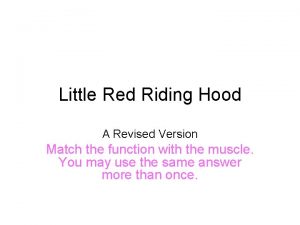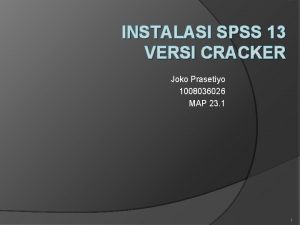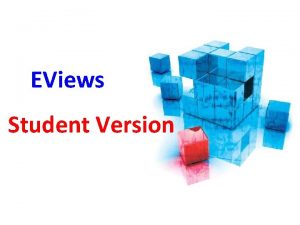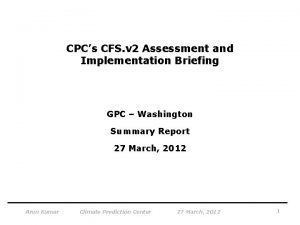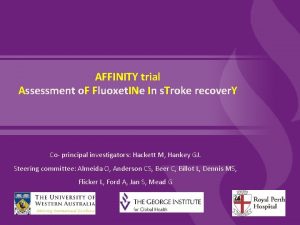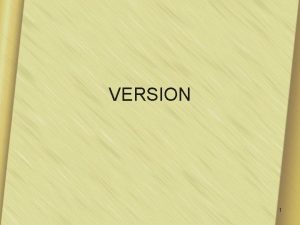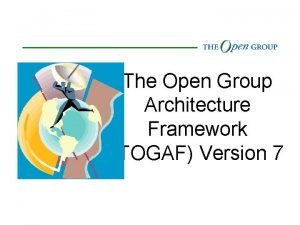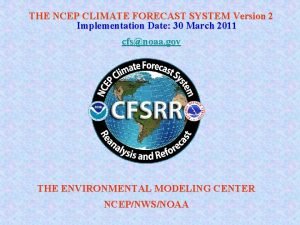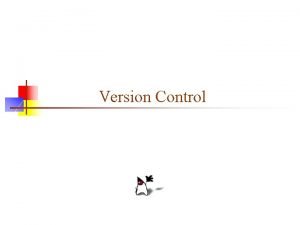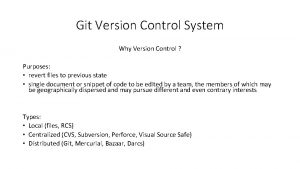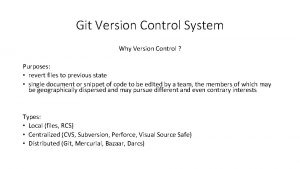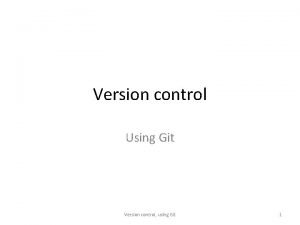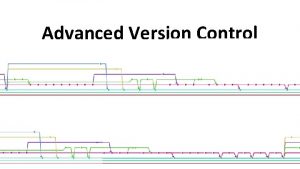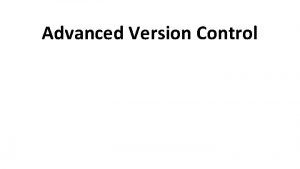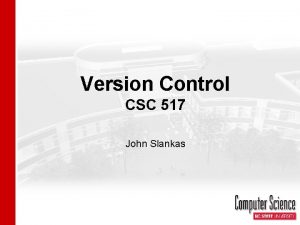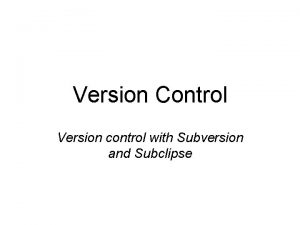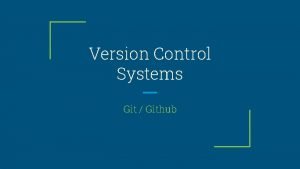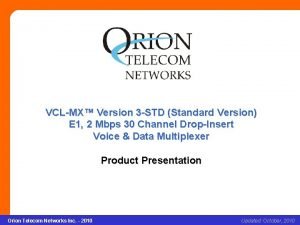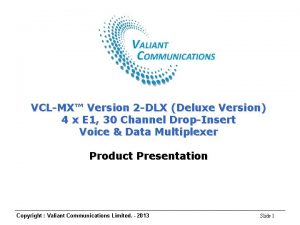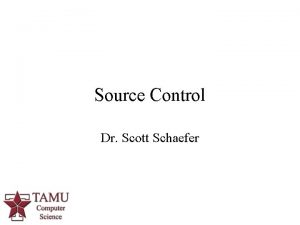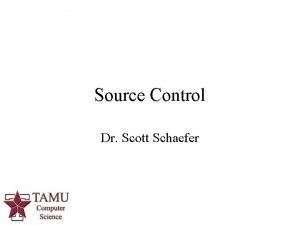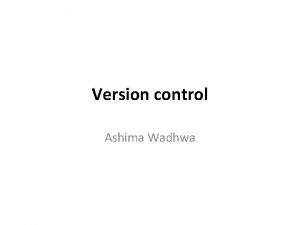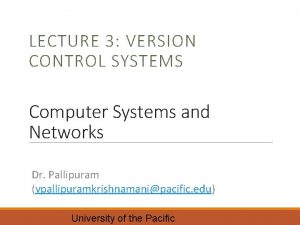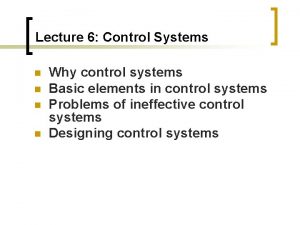Version Control Systems Why use What systems What

































- Slides: 33

Version Control Systems Why use? What systems? What functions? Creative Commons License – Curt Hill.

What are they? • Software that stores different versions of documents – Documents are usually source code – May also include auxiliary items: • Test cases • Documentation • Make files • Allow developers to recreate the way the system was at a previous time – Somewhat like an editor undo but much larger and more complicated Creative Commons License – Curt Hill.

Problems That are Solved • Program is updated but the fix broke something else – Cannot find all the places changed to restore to original state – Problem not detected until much later • Two people make changes to a program – Both changes work alone – When put together it does not work Creative Commons License – Curt Hill.

Versions • Often refers to a succession of the same program – Windows 7 and 8 are different versions • May also refer to different targets – Linux for Intel vs. Linux for ARM – Lots in common but differences in various places – This is more commonly referred to as a branch Creative Commons License – Curt Hill.

What do they do? • Keep multiple versions of any relevant documents • Maintain information about changes – Who made the change – Comments on what the change did – Dates of the versions – Bug report completed • Allows code to be checked out, changed and then checked back in • Show differences between two files Creative Commons License – Curt Hill.

What not to keep? • Anything that can be generated: • Object or machine language – Generated by compilers • Documentation that is machine generated by: – Java. Doc – Doxygen – Any other document generator • Anything else that can never change Creative Commons License – Curt Hill.

The Process • A repository keeps the documents – Very specialized database • Developer checks out a document • This is edited to improve it • It is checked back in (aka committed) with the control information • If the repository supports: – Automatic unit tests are run – Failure of these can retract the check in Creative Commons License – Curt Hill.

Terminology • Version – updated copy of a document • Branch – new target of a document – Versions are automatically created, but branches are not – Allows multiple current documents • Merge – making two branches into one • Project – a set of files pertaining to one program or system • Conflict – a check in of two items that do not agree Creative Commons License – Curt Hill.

First Branch Support • The C preprocessor was the first attempt to handle multiple platforms • This uses the #if, #ifdef, #ifndef etc. • Code specific to a single hardware or compiler could be incorporated without separating into two separate files – The separate files will defy proper maintenance Creative Commons License – Curt Hill.

Example Branch • Version 1. 0 is released • Version 1. 1 is an improvement • Before 1. 1 is ready for release a problem is found a bug fix generated – Create 1. 0. 1 • We now have a branch of 1. 1 and 1. 0. 1 Creative Commons License – Curt Hill.

A Branch 1. 0 1. 1 1. 0. 1 Creative Commons License – Curt Hill.

Example Merge • Two branches – 1. 1 is still under development – 1. 0. 1 is stable • Version 1. 1 has some improvements which we do not want to discard • What is needed is to merge the fix of 1. 0. 1 into 1. 1 Creative Commons License – Curt Hill.

A Merge 1. 0 1. 1 1. 2 1. 0. 1 Creative Commons License – Curt Hill.

Example Again • It is possible that the changes of 1. 1 did not need the bug fix of 1. 0. 1 because it tried another approach to the same code – If so the 1. 0. 1 becomes a dead end and is not developed further • The version numbers are likely to be maintained by the version control and more version numbers will be generated Creative Commons License – Curt Hill.

Branching Again • The branch before produced a dead end after the changes were merged with the developed new version • Branches are often more permanent – One branch for Windows – One branch for Mac – Both will be continued indefinitely Creative Commons License – Curt Hill.

Simultaneous Checkout 1. 2 a 1. 2 b Suppose two or more developers check out the same code in a day. What will happen on check in? Creative Commons License – Curt Hill.

Concurrency • Some systems only allow the first check in – This will force the second one to reconcile the two sets of changes – Atomic commits • Some systems will accept both provided they do not touch any of the same lines – Merging • Some will merge both and then run tests and reject them if they do not work Creative Commons License – Curt Hill.

Check in 1. 3 1. 4 1. 2 1. 3 Top checked in first and retained. Bottom checks out 1. 3 and then applies different changes. Creative Commons License – Curt Hill.

Storage • There mostly two ways to store the data – Snapshot – Keep separate copies of each file for each version • Faster to extract but uses more space – Change set – Store changes within the file • Unchanged lines only exist once • Where are things stored: – Single library containing all the files – A directory of files • Usually matches the sandbox directory Creative Commons License – Curt Hill.

• Local Paradigms – Originally there was a single local repository – All changes needed to be run on that machine • Client – server – Still one repository, but clients may update from any networked machine • Distributed – Repository is duplicated on every developer’s machine Creative Commons License – Curt Hill.

Distributed Again • A distributed version control system has multiple repositories • How are they kept synchronized? • A push is a repository telling others about changes in a project • A pull is a repository asking for updates from another • Push/pull usually involves multiple files instead of single files Creative Commons License – Curt Hill.

Systems • • SCCS RCS Subversion GIT Mercurial Visual Source Safe Many others Creative Commons License – Curt Hill.

SCCS • • Source Code Control System UNIX May be first, no later that early 1970 s Stored originals and then the differences between a version and the next version Creative Commons License – Curt Hill.

RCS • Revision Control System • Update of SCCS, also on UNIX • Keep current and uses differences to go back in time Creative Commons License – Curt Hill.

CVS • Concurrent Version System • Update of RCS but operates on several types of systems • Uses client / server approach Creative Commons License – Curt Hill.

Subversion • An update of CVS • May apply versioning to directories and metadata – Not just files • Atomic check-in – No overwriting • Client Server model – Clients may be on different machines Creative Commons License – Curt Hill.

SVN Architecture Creative Commons License – Curt Hill.

GIT • An open-source, distributed version control system – GITHUB seems to be the current choice for open source projects • Developed by Linus Torvalds for the LINUX kernel • Designed for speed and scalability • Each developer gets a local copy of the repository Creative Commons License – Curt Hill.

Seriously Creative Commons License – Curt Hill.

Mercurial • Another open-source, distributed version control system with many similarities to GIT Creative Commons License – Curt Hill.

Too Old • If a software system lasts long enough you may not be interested in saving everything forever • One possibility is choosing a date and then removing all the changes that occurred earlier than that time – Possibly moving the old changes to less accessible media Creative Commons License – Curt Hill.

Conclusions • Version control is a requirement for software development • Allows easy recreation of the project at a particular time – Which makes it easier to find when a bug was introduced • Also supports branches – Different platforms or different functionality while still maintaining the common code base • The check out and check in feature enables teams Creative Commons License – Curt Hill.

Post Conclusions • Let’s see if we can examine some of these – Subversion – Git – Google’s Version Control Creative Commons License – Curt Hill.
 Version control systems industry
Version control systems industry Hey bye bye
Hey bye bye Tortoisesvn tutorial
Tortoisesvn tutorial Version control in software configuration management
Version control in software configuration management Git tutorial for beginners ppt
Git tutorial for beginners ppt Version control branching
Version control branching Alienbrain version control
Alienbrain version control Versionhallinta ohjelmat
Versionhallinta ohjelmat Powerpoint version control
Powerpoint version control Git powerpoint
Git powerpoint Dont ask why why why
Dont ask why why why National numeracy learning progression
National numeracy learning progression Vtp version 3
Vtp version 3 Urs.v2
Urs.v2 Uft version history
Uft version history Triangle congruence (a) maze worksheet
Triangle congruence (a) maze worksheet Heb 4:12 amp
Heb 4:12 amp Apostle creed prayer
Apostle creed prayer Risk student version
Risk student version Sac sedboyaca
Sac sedboyaca Act 2 prologue romeo and juliet in modern english
Act 2 prologue romeo and juliet in modern english Alan rea
Alan rea Little red riding hood a revised version answers
Little red riding hood a revised version answers Quien es el autor secundario de la biblia
Quien es el autor secundario de la biblia Nhdplus version 2
Nhdplus version 2 Download spss 13
Download spss 13 Eviews student
Eviews student Cfs version 2
Cfs version 2 Ine trial
Ine trial Podalic presentation definition
Podalic presentation definition Togaf history
Togaf history Climate forecast system version 2
Climate forecast system version 2 Fhir version history
Fhir version history Snow white variations
Snow white variations
